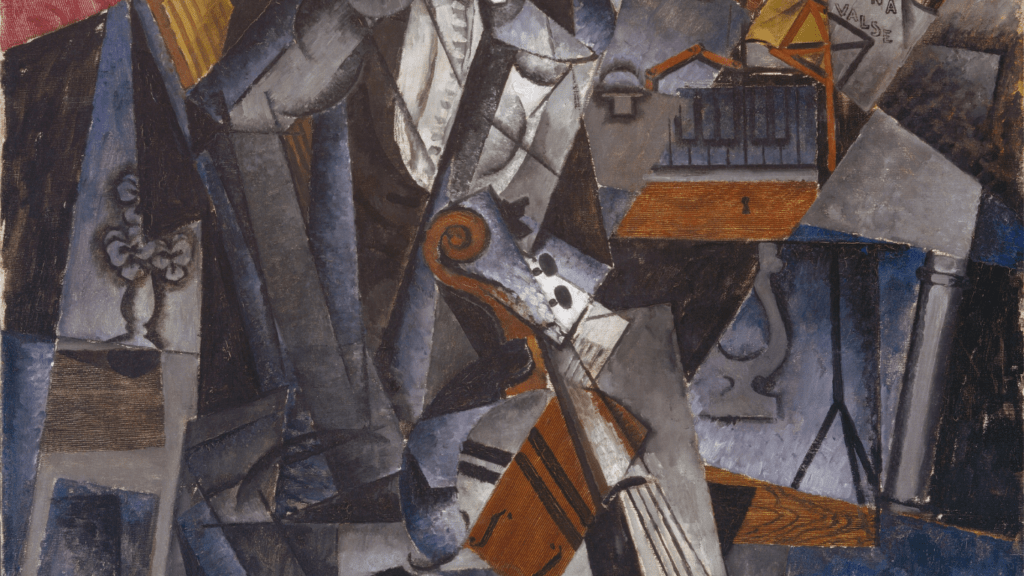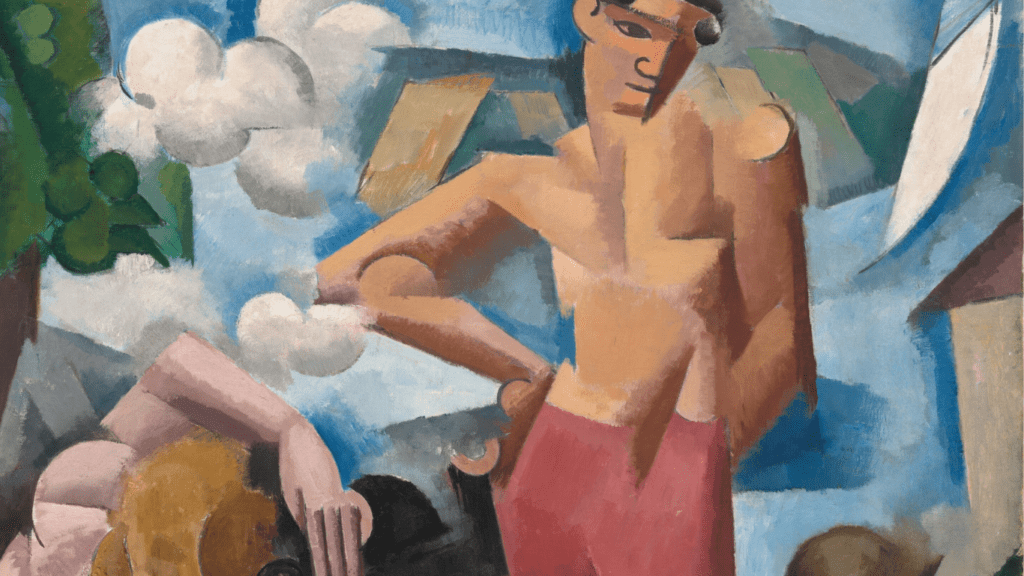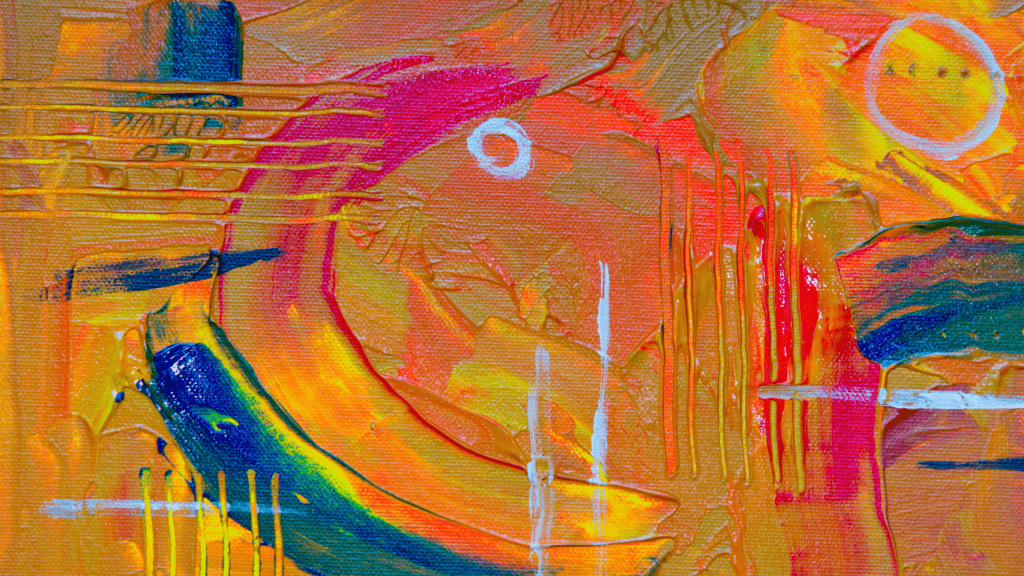Overview of Cubism
Cubism marked a radical departure from traditional art forms by deconstructing objects into geometric shapes. Pioneered in the early 20th century, this movement redefined the essence of visual representation.
Origins and Influences
Cubism began around 1907 but found its roots in the post-Impressionist works of Cézanne. His exploration of forms influenced Pablo Picasso and Georges Braque. They drew inspiration from African art and Iberian sculpture, integrating fragmented forms into their compositions. Picasso’s “Les Demoiselles d’Avignon” (1907) stands as an early example, combining influence and innovation.
Key Artists and Works
Pablo Picasso and Georges Braque are central figures in Cubism. Picasso’s “Guernica” (1937) demonstrates fragmented imagery that conveys deep emotion. Braque’s “Houses at L’Estaque” (1908) introduced landscapes with cubist elements. Other notable artists include Juan Gris, whose “Portrait of Pablo Picasso” (1912) exemplifies the Synthetic Cubism phase, where multiple viewpoints merge into a cohesive whole.
Impact on Art
Cubism significantly impacted art by altering how artists perceive and depict reality. It ushered in movements like Futurism and Constructivism, emphasizing geometric simplification. The fragmentation approach influenced architecture and design, evident in the works of Le Corbusier. Through Cubism, the art world learned to see multiple perspectives simultaneously, changing perception forever.
Transition to Modernism
As Cubism paved the way for new perspectives, the art world transitioned into Modernism, embracing diverse styles that broke from tradition.
Early Modernist Movements
Early Modernist movements like Futurism, Constructivism, and Dadaism built upon the experimental spirit of Cubism. Futurism emerged in Italy around 1909, glorifying speed and technology. Constructivism began in Russia after 1913, focusing on abstraction and geometry to serve social purposes. Dadaism, originating in Zurich in 1916, used absurdity and irrationality to challenge contemporary art conventions.
Bridging the Gap: Key Figures
Key figures played vital roles in Modernism’s development. Wassily Kandinsky, a pioneer of abstract art, used color and form to evoke emotions. Kazimir Malevich introduced Suprematism, focusing on basic geometric forms like circles and squares. Marcel Duchamp’s readymades, such as “Fountain” (1917), redefined art by incorporating everyday objects.
Influential Artworks
Several influential artworks marked the rise of Modernism. Kandinsky’s “Composition VII” (1913) exemplified abstract expression with dynamic forms and vivid colors. Malevich’s “Black Square” (1915) represented pure abstraction, challenging viewers’ perceptions of art. Duchamp’s “Fountain” questioned artistic norms, forcing observers to reconsider the nature of art itself.
Throughout the evolution from Cubism to Modernism, these movements, figures, and artworks galvanized the relentless pursuit of innovation in art history.
Defining Features of Modernism

Modernism represents a radical departure from tradition, spearheading a diverse artistic expression. It focuses on abstraction and the breaking of historical conventions.
Characteristics and Techniques
- Modernism emphasizes innovation and experimentation with new forms.
- Artists use abstraction, rejecting realistic representation for shapes, colors, and lines.
- Techniques include collage, photomontage, and nontraditional materials (e.g., everyday objects).
- Modernism incorporates self-reflection, questioning the nature of art itself.
Prominent Artists
Several visionaries revolutionized Modernism. Pablo Picasso explored fragmented forms and bold abstractions. Wassily Kandinsky introduced non-objective painting. Marcel Duchamp shifted paradigms with ready-mades, like “Fountain.” Georgia O’Keeffe, with her intricate abstractions, significantly influenced American modernism.
Noteworthy Art Pieces
Key works define Modernism’s impact. Picasso’s “Guernica” portrays war’s chaos through abstract brutality. Kandinsky’s “Composition VIII” exemplifies pure abstraction. Duchamp’s “Fountain” challenges the art institution. O’Keeffe’s “Black Iris III” demonstrates intricate abstraction using organic forms. These pieces illustrate the diverse expressions within Modernism.
Comparison Between Cubism and Modernism
Cubism and Modernism, though distinct, showcase pivotal shifts in artistic expression. They both challenged traditional norms, pioneering new ways to depict reality and abstraction.
Similarities
Both Cubism and Modernism broke away from classical representational art. They favored abstraction over realistic depictions, questioning conventional forms and perspectives. Most artists, like Picasso and Duchamp, experimented with these styles to explore new dimensions of visual expression. Both movements emphasized the use of geometric shapes, although in different ways, to convey complex ideas and emotions. Each movement sought to reflect the modern world’s fragmented and multifaceted nature, incorporating elements from technology and culture.
Differences
While Cubism concentrated on deconstructing objects into geometric forms, Modernism embraced a broader range of styles and techniques. Cubism, initiated by Picasso and Braque, focused on depicting multiple perspectives simultaneously within a single plane. In contrast, Modernism included various sub-movements such as Surrealism, Abstract Expressionism, and Minimalism, showcasing a more diverse repertoire. Many Modernist artists like Kandinsky explored pure abstraction, moving further from recognizable forms than Cubist works. Additionally, Modernism often incorporated everyday objects and new materials, reflecting the era’s technological advancements, while Cubism remained more focused on traditional art materials.
Legacy and Influence
- Cubism laid the groundwork for many Modernist movements, influencing artists across the 20th century.
- Its emphasis on abstraction and geometry carried over into Modernism, which continued to evolve and diversify artistic expression.
- The legacy of these movements persists today, as contemporary artists draw inspiration from their revolutionary techniques.
- Cubism’s fragmentation and Modernism’s experimental approaches continue to shape various artistic domains, from digital art to installations.
- Notably, galleries and museums still showcase works from both movements, underscoring their lasting impact on art history.





